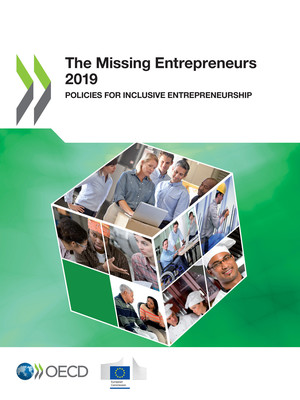copy the linklink copied!12. Bulgaria
This country profile presents key trends in entrepreneurship by women, youth and seniors, including indicators that benchmark data for Bulgaria against the European Union average. It also highlights current inclusive entrepreneurship policy issues and recent developments.
copy the linklink copied!Key trends
Self-employment rates have been below the European Union (EU) average for the past decade. This gap is observed across all of the key target groups in 2018: women (7.3% vs. 9.6%), youth (4.8% vs. 6.5%), and seniors (13.0% vs. 17.7%). However, self-employed Bulgarians were more likely to have employees in 2018, especially women (28.1% vs. 23.3%) and seniors (37.1% vs. 31.0%). Few Bulgarians appear to be involved in starting and managing new businesses over the period 2014-18. The gap with the EU average was greatest among youth (4.9% vs. 7.7%).
copy the linklink copied!Hot issue
Considerable resources in recent years have been concentrated on support of youth through the Youth Guarantee and the Youth Employment Initiative, including youth entrepreneurship support. However, two key challenges have been faced in implementing youth entrepreneurship support. First, monitoring data suggest that the take-up rates of schemes launched under the Youth Guarantee have been very low and are declining. Second, most support initiatives are targeted at youth with a secondary or tertiary education, leaving drop-outs and other groups (e.g. low-skilled Roma youth) with little support. Policy makers are looking to address these challenges.
copy the linklink copied!Recent policy developments
Several actions have been launched to offer more people an opportunity to pursue entrepreneurship, particularly women. One of the goals of the national Strategy for Promoting Gender Equality 2017-23 is to promote entrepreneurship for women and the Action Plan of the Strategy for Promotion of Women Entrepreneurship in Bulgaria 2017-2023 was developed to provide a framework for support initiatives. Initiatives to boost and strengthen women’s entrepreneurship include participation in “The Women in Entrepreneurship Roadshow”, which was launched in 2019 by the European Commission, United States Mission to the European Union and others. It is a series of ten events across the EU that aim to connect 300 women entrepreneurs with investors.
This profile is based on a recent country assessment report, which can be found at: www.oecd.org/cfe/leed/inclusive-entrepreneurship.htm.
Metadata, Legal and Rights
https://doi.org/10.1787/3ed84801-en
© OECD/European Union 2019
The use of this work, whether digital or print, is governed by the Terms and Conditions to be found at http://www.oecd.org/termsandconditions.



